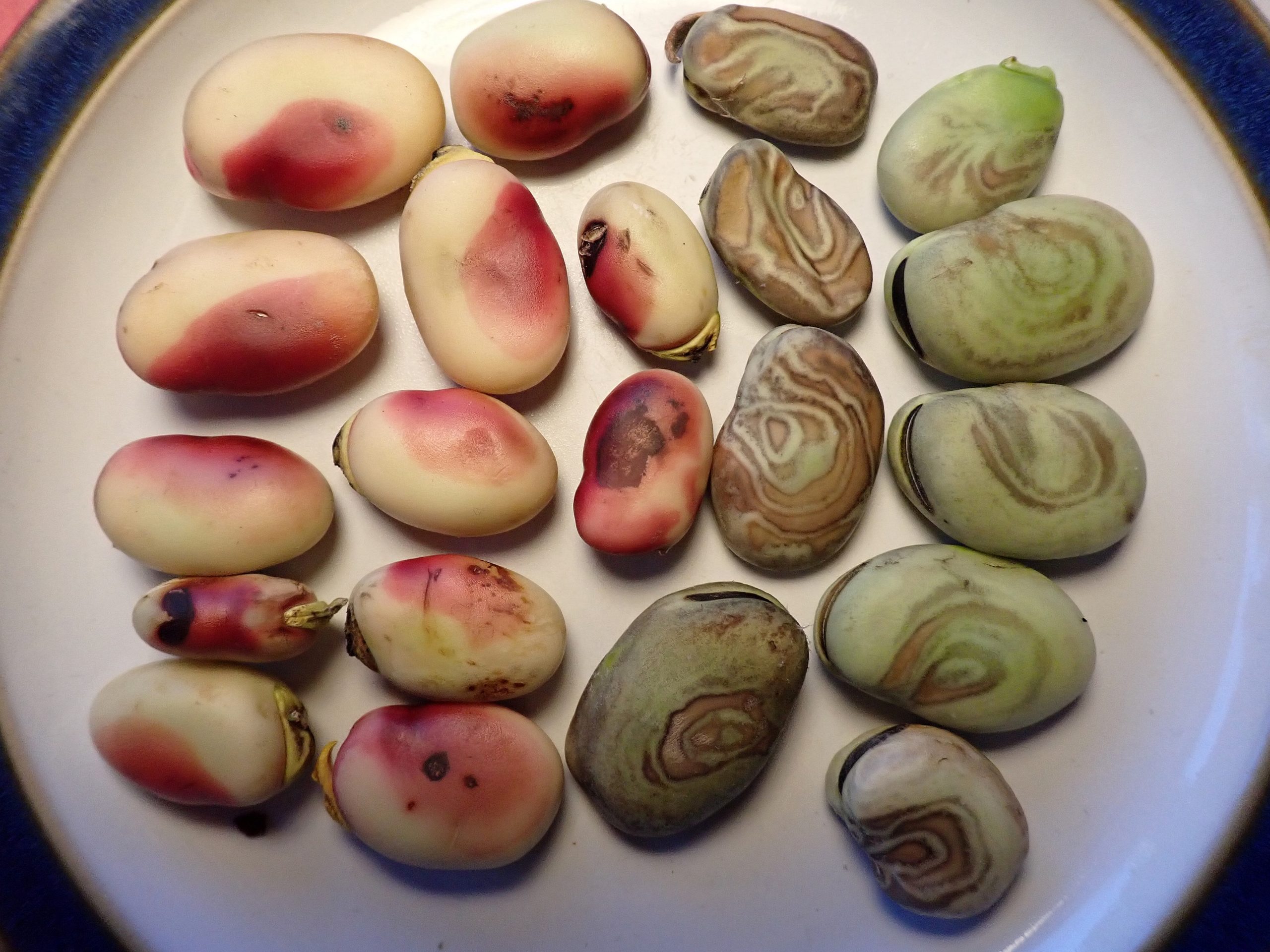I harvested two of the more beautiful broad (fava) beans I’ve grown yesterday, both of which originate in Canada. Red Cheek and Fingerprint favas. The diversity of forms, colours and sizes in these beans doesn’t cease to amaze me! I will definitely be trying to maintain these forms within my grex of broad beans (selection for a wide diversity of different forms every year and all planted close together so that they will cross promiscuously)!
Read legendary Will Bonsall’s article on fava beans where he talks about the diversity of forms and his collection of 250 varieties he maintains for Seed Savers Exchange: https://www.mofga.org/resources/beans/favas

Tag Archives: diversity
Broad Bean Diversity contributes to Resilience
Broad beans (favas / bondebønner) will easily cross with other varieties that are growing nearby. In order to keep a variety pure, you need to isolate them physically. I’ve chosen a different strategy and manage to maintain a mix of different bean colour and size forms by selecting for these characteristics every autumn. This automatically gives different flower colours too (broad beans are beautiful enough to be included in the edimental category and are also edi-ento-mentals as they are also extremely popular with bumblebees). Here are my selections which I made yesterday after drying the beans for storage. 
Each form will be stored separately and each variety will be planted close to each other in a large block of beans containing many different forms! I think that diversity within a species also contributes to a good harvest with better bean set. I have never had a crop failure using my own home saved mix of beans. I don’t offer the different forms as named varieties, but as a mix or composite “Væres Venner* Mix” through the KVANN / Norwegian Seed Savers yearbook (kvann.no) in February so that others can also select for separate forms!
*Væres Venner is the community garden where most are grown.
See also this post showing the diversity of flowers that produced these beans: https://www.edimentals.com/blog/?p=26183
